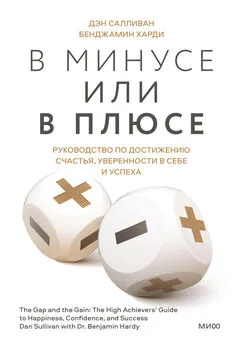Бен Уилсон - Метрополис. Город как величайшее достижение цивилизации
- Название:Метрополис. Город как величайшее достижение цивилизации
- Автор:
- Жанр:
- Издательство:Эксмо
- Год:2021
- Город:Москва
- ISBN:978-5-04-157333-1
- Рейтинг:
- Избранное:Добавить в избранное
-
Отзывы:
-
Ваша оценка:
Бен Уилсон - Метрополис. Город как величайшее достижение цивилизации краткое содержание
Британский историк Бен Уилсон, автор научных бестселлеров, расскажет удивительную историю города как явления. Совершив путешествие по знаменитым городам прошлого и настоящего, вы почувствуете силу и мощь городов, их влияние на историю человечества и цивилизацию в целом.
В формате PDF A4 сохранён издательский дизайн.
Метрополис. Город как величайшее достижение цивилизации - читать онлайн бесплатно ознакомительный отрывок
Интервал:
Закладка:
257
Frederika Bremmer, The Homes of the New World: impressions of America, 2 vols. (NY, 1858), Vol. I, p. 605.
258
Isabella Bird, The Englishwoman in America (London, 1856), p. 156; Paul Bourget, Outre-Mer: impressions of America (London, 1895), p. 117.
259
De Tocqueville, p. 108.
260
Donald L. Miller, City of the Century: the epic of Chicago and the making of America (NY, 1996), p. 217.
261
Frederic Trautmann, ‘Arthur Holitischer’s Chicago: a German traveler’s view of an American city’, Chicago History , 12:2 (Summer 1983), 42; Miller, p. 493; Simon Gunn, ‘The Middle Class, Modernity and the Provincial City: Manchester c .1840–80’, in Alan Kidd and David Nicholls (eds.), Gender, Civic Culture and Consumerism: middle-class identity in Britain 1800–1940 (Manchester, 1999), pp. 112–13ff.
262
Miller, pp. 301ff.
263
Friedrich Engels, The Condition of the Working Class in England (London, 1958), pp. 61, 63, 64.
264
Дословный перевод Angel Meadow .
265
M. Leon Faucher, Manchester in 1844; its present condition and future prospects (Manchester, 1844), pp. 67–8; John M. Werly, ‘The Irish in Manchester, 1832–49’, Irish Historical Studies , 18:71 (Mar. 1973), 348.
266
Miller, p. 123.
267
Ibid., p. 136; Josiah Seymour Currey, Chicago: its history and builders (Chicago 1912), Vol. III, p. 177.
268
Bubbly ( англ .) – пузыристый, шипучий.
269
Miller, p. 122.
270
Gunn, p. 118.
271
Miller, pp. 273ff.
272
Angus Bethune Reach, Manchester and the Textile Districts in 1849 (Rossendale, 1972), p. 61.
273
Andrew Davies, The Gangs of Manchester: the story of scuttlers, Britain’s first youth cult (Preston, 2008), chapter 2.
274
Ibid.; Jenny Birchall, ‘“The carnival revels of Manchester’s vagabonds”: young working-class women and monkey parades in the 1870s’, Women’s History Review, 15 (2006), 229–52.
275
Davies, passim; Mervyn Busteed, The Irish in Manchester, c.1750–1921: resistance, adaptation and identity (Manchester, 2016), chapter 2.
276
M. A. Busteed and R. I. Hodgson, ‘Irish Migrant Responses to Urban Life in Early Nineteenth-Century Manchester’, The Geographical Journal, 162:2 (July 1996), 150.
277
Richard Junger, Becoming the Second City: Chicago’s news media, 1833–1898 (Chicago, 2010), p. 22.
278
Miller, p. 137; Frederic M. Thrasher, The Gang: a study of 1,313 gangs in Chicago (Chicago, 1936).
279
Richard C. Lindberg, Gangland Chicago: criminality and lawlessness in the Windy City (Lanham, 2016), p. 22.
280
James Phillips Kay, The Moral and Physical Condition of the Working Classes Employed in the Cotton Manufacture in Manchester (London, 1832) p. 72.
281
Engels, p. 137.
282
2,1 кв. километра.
283
Zubair Ahmed, ‘Bombay’s Billion Dollar Slum’, http://news.bbc.co.uk/1/hi/business/3487110.stm.
284
Janice E. Perlman, ‘The Metamorphosis of Marginality: four generations in the favelas of Rio de Janeiro’, Annals of the American Academy of Political and Social Science , 606 (July 2006), 167; Sanni Yaya, Olalekan A. Uthman, Friday Okonofua and Ghose Bishwajit, ‘Decomposing the Rural-Urban Gap in the Factors of Under-Five Mortality Rate in Sub-Saharan Africa? Evidence from 35 countries’, BMC Public Health , 19 (May 2019); Abhijit V. Banerjee and Esther Duflo, ‘The Economic Lives of the Poor’, Journal of Economic Perspectives , 21:1 (Winter, 2007), table 9; The World Bank, ‘Employment in Agriculture’ https://data.worldbank.org/indicator/SL.AGR.EMPL.ZS.
285
Hippolyte Taine, Notes on England (London, 1957), pp. 290ff.
286
John Burnett (ed.), Destiny Obscure: autobiographies of childhood, education and family from the 1820s to the 1920s (London, 1982), p. 107; Frank Norris, The Pit: a story of Chicago (NY, 1920), pp. 149ff.
287
Miller, p. 277.
288
Emma Griffin, Liberty’s Dawn: a people’s history of the industrial revolution (New Haven, 2013), pp. 240ff.
289
Faucher, p. 52.
290
John B. Jentz, ‘The 48ers and the Politics of the German Labor Movement in Chicago during the Civil War Era; community formation and the rise of a labor press’, in Elliot Shore, Ken Fones-Wolf, James P. Danky (eds.), The German-American Radical Press: the shaping of a left political culture, 1850–1940 (Chicago, 1992), pp. 49ff.
291
City of Chicago, Department of Zoning and Planning, ‘Vorwaerts Turner Hall, 2421 W. Roosevelt Rd: final landmark recommendation adopted by the Commission on Chicago Landmarks, September 3 2009’, https://www.chicago.gov/content/dam/city/depts/zlup/Historic_Preservation/Publications/Vorwaerts_Turner_Hall.pdf.
292
Royal L. Melendy, ‘The Saloon in Chicago (II)’, American Journal of Sociology, 6:4 (January 1901), 433–4.
293
Eric L Hirsch, Urban Revolt: ethnic politics in the nineteenth-century Chicago labor movement (Berkeley, Cal., 1990), p. 163.
294
Sandra Burman (ed.), Fit Work for Women (Abingdon, 2013), pp. 100ff.
295
Gertrud Pfister, ‘The Role of German Turners in American Physical Education’, in Pfister (ed.), Gymnastics, a transatlantic movement (Abingdon, 2011); Gerald Gems ‘The German Turners and the Taming of Radicalism in Chicago’, in Pfister (ed.); Gerald Gems, Windy City Wars: labor, leisure, and sport in the making of Chicago (Lanham, 1997).
296
Dagmar Kift, The Victorian Music Hall: culture, class and conflict, trans. Roy Kift (Cambridge, 1996), p. 1.
297
Harvey Warren Zorbaugh, The Gold Coast and the Slum: a sociological study of Chicago’s Near North Side (Chicago, 1929), p. 3.
298
Caroline Wyatt, ‘“Paris Syndrome” strikes Japanese’, BBC News, 20/12/2006, http://news.bbc.co.uk/1/hi/6197921.stm; Katada Tamami, ‘Reflections on a case of Paris syndrome’, Journal of the Nissei Hospital , 26:2 (1998), 127–32.
299
Sigmund Freud, Life and Work: the young Freud, 1885–1900, ed. Ernest Jones (London, 1953), p. 200.
300
Emma Willard, Journals and Letters from France and Great Britain (NY, 1833), p. 30.
301
David P. Jordan, Transforming Paris: the life and labors of Baron Haussmann (NY, 1995), pp. 92–3; Victoria E. Thompson, ‘Telling “Spatial Stories”: urban space and bourgeois identity in nineteenth-century Paris’, Journal of Modern History , 75:3 (September 2003), 540.
302
Anon., Ten Years of Imperialism in France: impressions of a Flâneur (London, 1862), p. 30.
303
Harvey Levenstein, Seductive Journey: American tourists in France from Jefferson to the Jazz Age (Chicago, 1998), p. 57; David Harvey, Paris: capital of modernity (NY, 2006), pp. 32–3.
304
Gregory Shaya, ‘The Flâneur, the Badaud, and the Making of a Mass Public in France, circa 1860–1910’, American Historical Review, 109:1 (February 2004), 50; T. J. Clark, The Painting of Modern Life: Paris in the art of Manet and his followers (London, 1990), p. 33.
305
Anna Jameson, Diary of an Ennuyée (Boston, MA, 1833), p. 6; Shaya, passim.
306
И в русском тоже, поэтому оно заимствовано из французского и в английский, и в русский.
307
Christopher E. Fort, The Dreyfus Affair and the Crisis of French Manhood (Baltimore, 2004), p. 107; Honoré de Balzac, The Physiology of Marriage, Part 1, Meditation 3; Charles Baudelaire, The Painter of Modern Life and Other Essays, trans. Jonathan Mayne (NY, 1986), p. 9.
308
Thompson, 532, n.34; Shaya, 51; Balzac, 1:3.
309
Ten Years of Imperialism , preface; Susan Sontag, On Photography (London, 1979), p. 55.
310
Jordan (1995), pp. 50ff, 166–7; David H. Pinkney, ‘Napoleon III’s Transformation of Paris: the origins and development of the idea’, Journal of Modern History, 27:2 (June 1955), 125–34.
311
Patrice de Moncan, Le Paris d’Haussmann (Paris, 2002), p. 28.
312
Jordan (1995), pp. 186ff.
313
Colin Jones, ‘Theodore Vacquer and the Archaeology of Modernity in Haussmann’s Paris’, Transactions of the Royal Historical Society, 6th series, 17 (2007), 167; Ten Years of Imperialism, p. 7; David P. Jordan, ‘Baron Haussmann and Modern Paris’, The American Scholar, 61:1 (Winter 1992), 105ff.
314
Jordan (1995), pp. 265, 290.
315
Ibid., pp. 198ff.
316
Почти 132 километра.
317
1609 километров.
318
Donald L. Miller, City of the Century: the epic of Chicago and the making of America (NY, 1996), pp. 124–7.
319
Jordan (1995), p. 274.
320
18,2 кв. километра.
321
De Moncan, p. 107.
322
Elaine Denby, Grand Hotels: reality and illusion (London, 1998), p. 84.
323
Michael B. Miller, The Bon Marché: bourgeois culture and the department store 1869–1920 (Princeton, 1981); Meredith L. Clausen, ‘Department Stores and Zola’s “Cathédrale du Commerce Moderne”’, Notes in the History of Art , 3:3 (Spring 1984), 18–23; Robert Procter, ‘Constructing the Retail Monument: the Parisian department store and its property, 1855–1914’, Urban History , 33:3 December 2006), 393–410.
324
Galignani’s New Paris Guide (Paris, 1860), p. 13.
325
Jan Palmowski, ‘Travels with Baedeker: the guidebook and the middle classes in Victorian and Edwardian Britain’, in Rudy Koshar (ed.), Histories of Leisure (Oxford, 2002).
326
London & Partners, ‘London Tourism Report 2014–2015’, https://files.londonandpartners.com/l-and-p/assets/our-insight-london-tourism-review-2014–15.pdf.
Читать дальшеИнтервал:
Закладка:
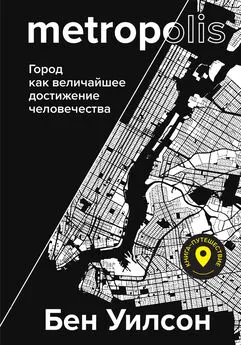

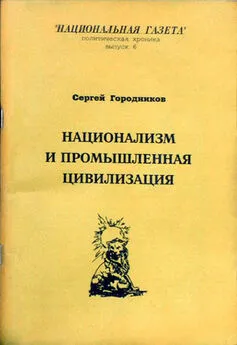

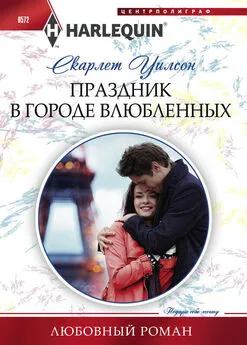
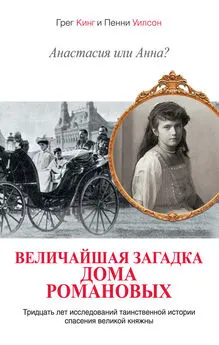
![Теа фон Харбоу - Метрополис. Индийская гробница [Романы]](/books/1096816/tea-fon-harbou-metropolis-indijskaya-grobnica-rom.webp)
